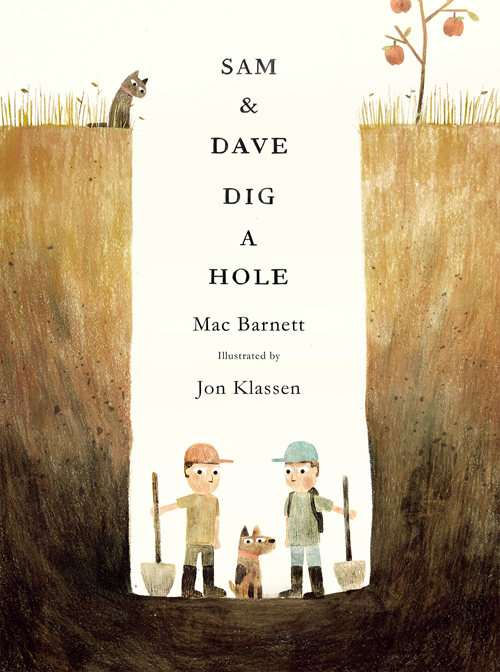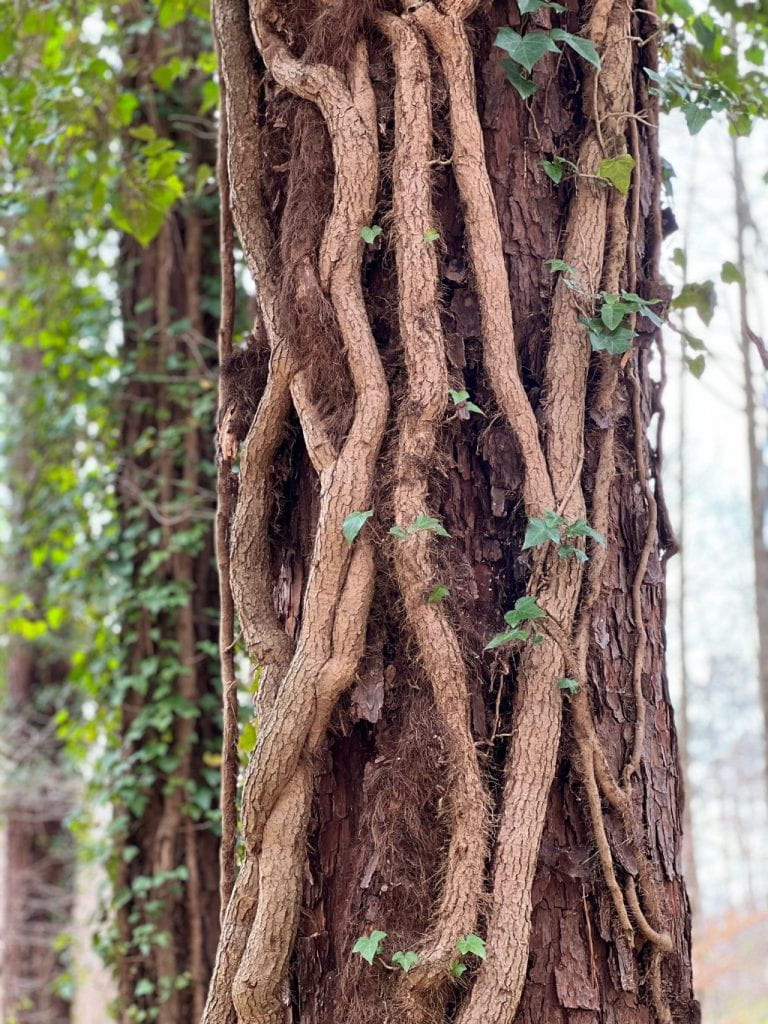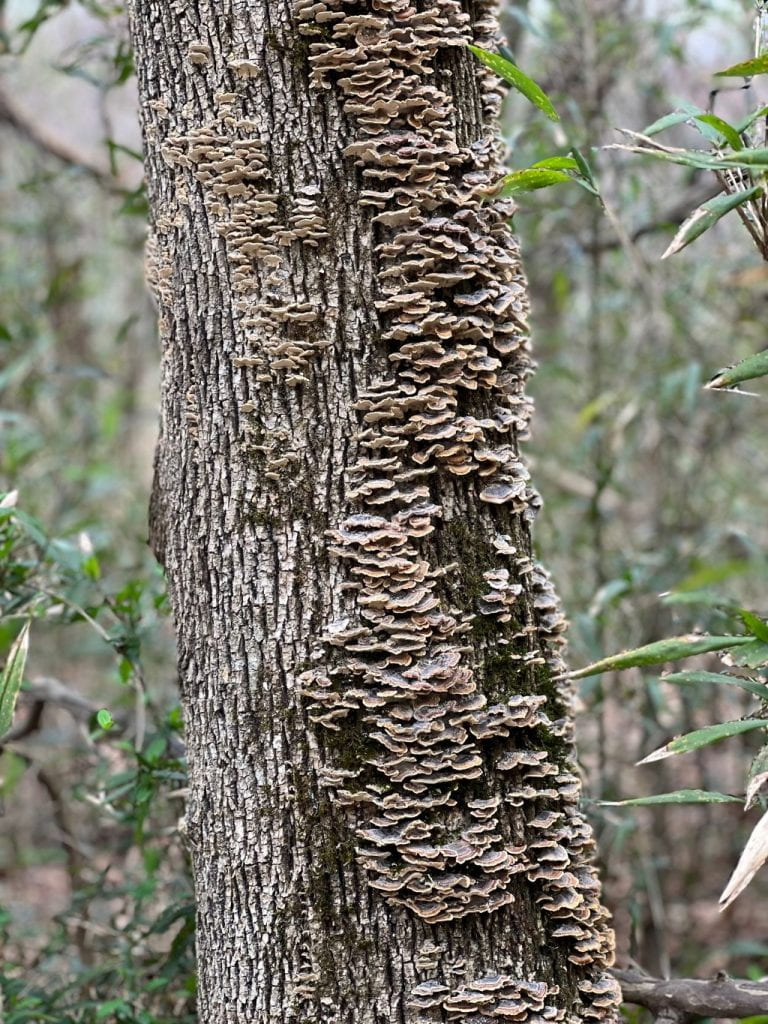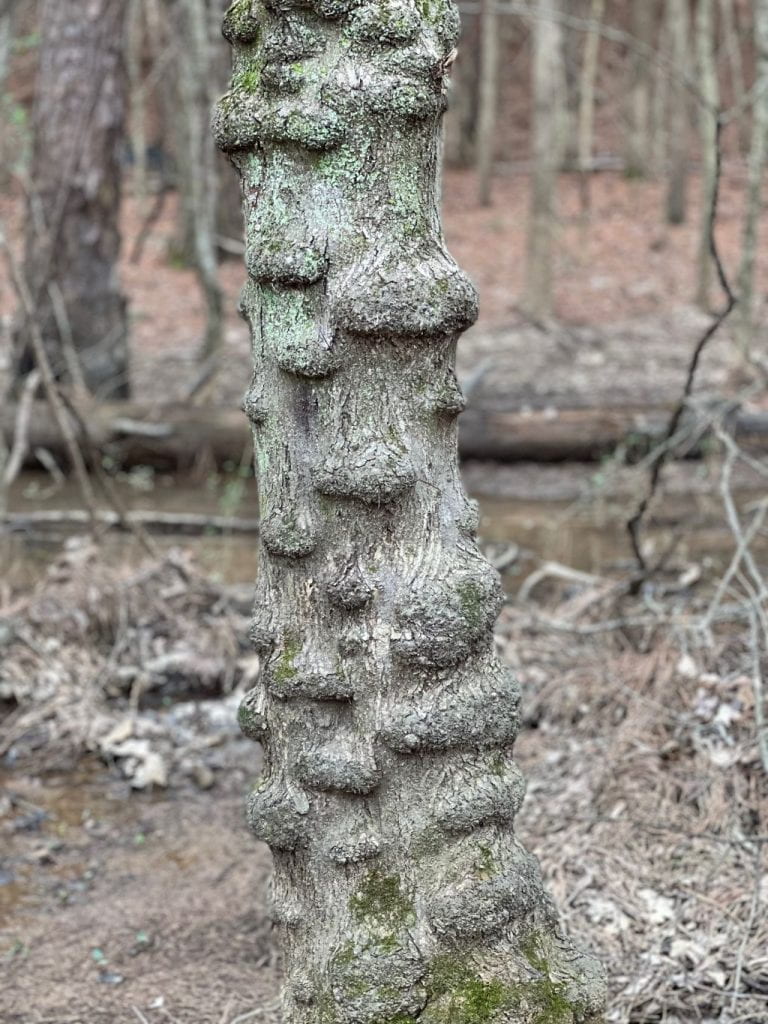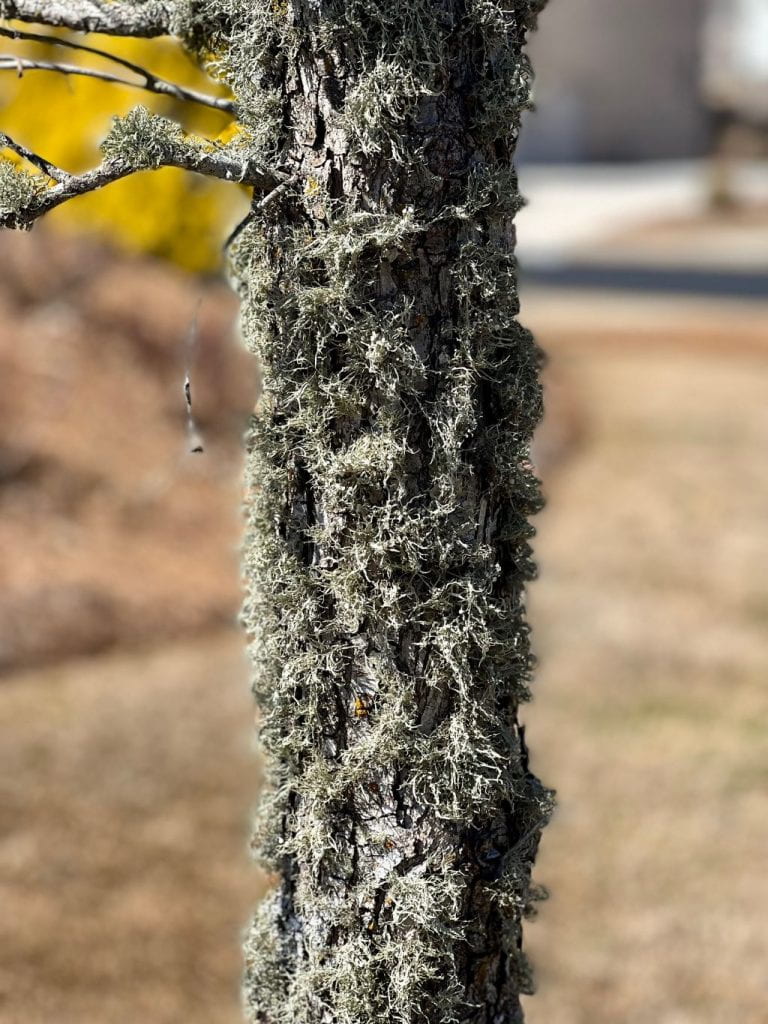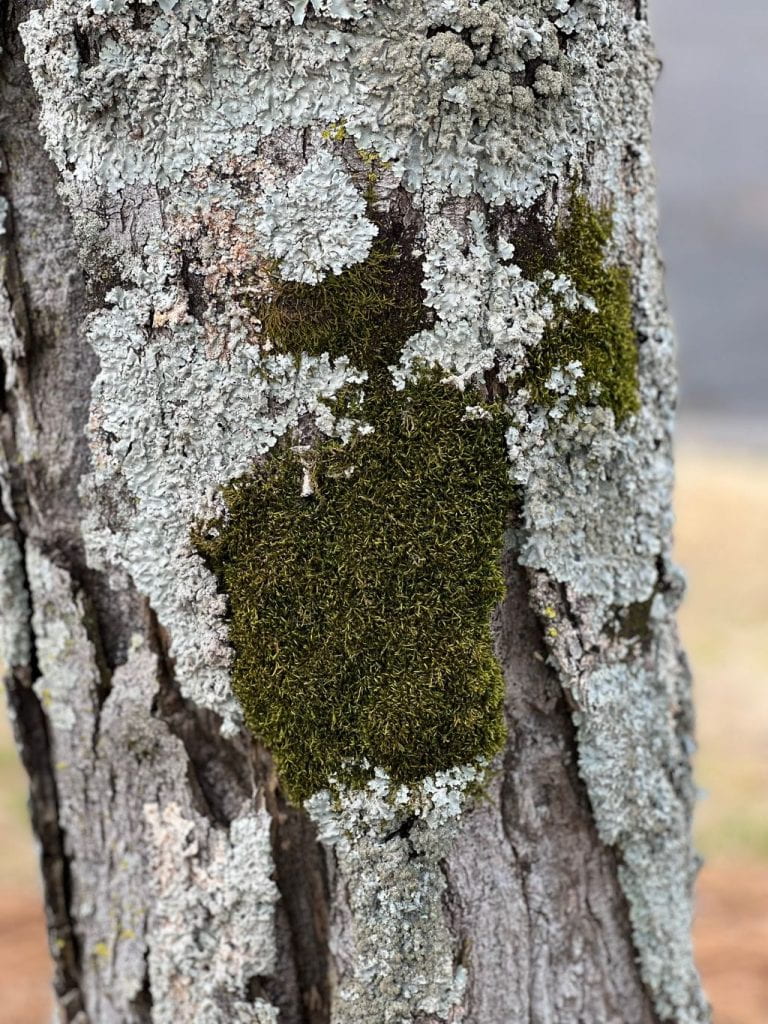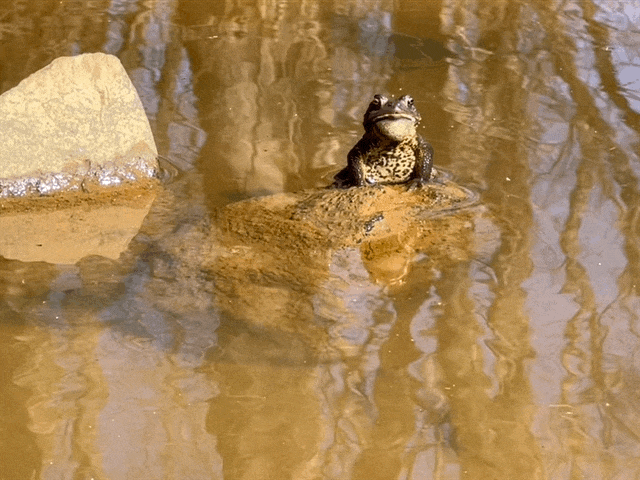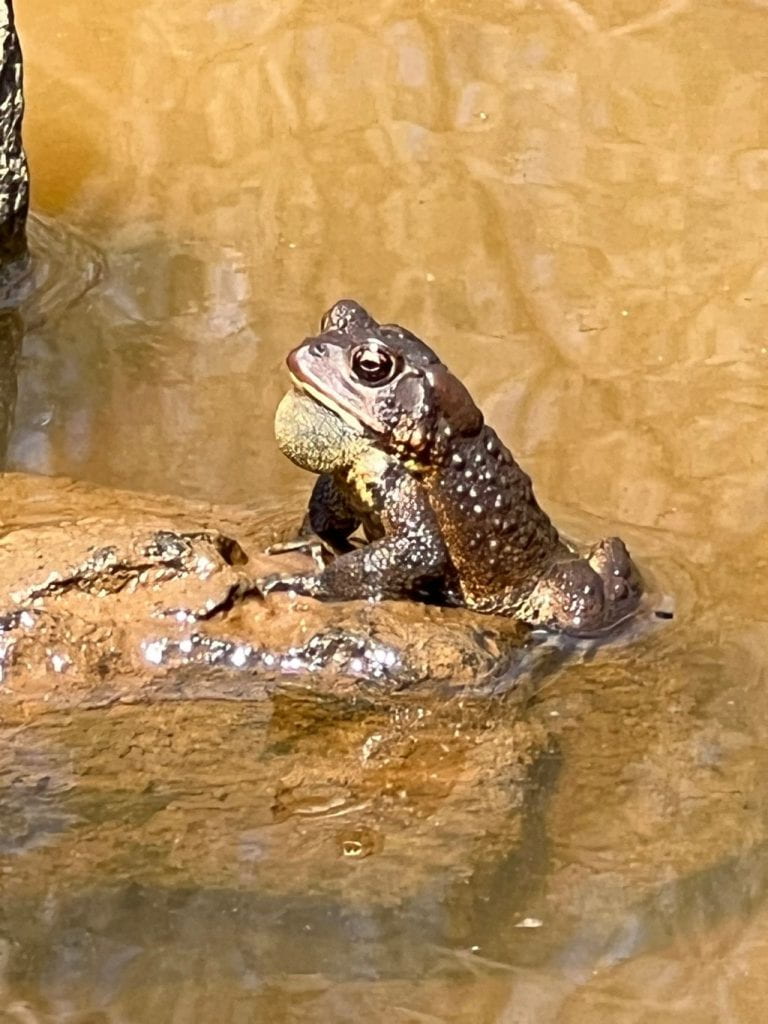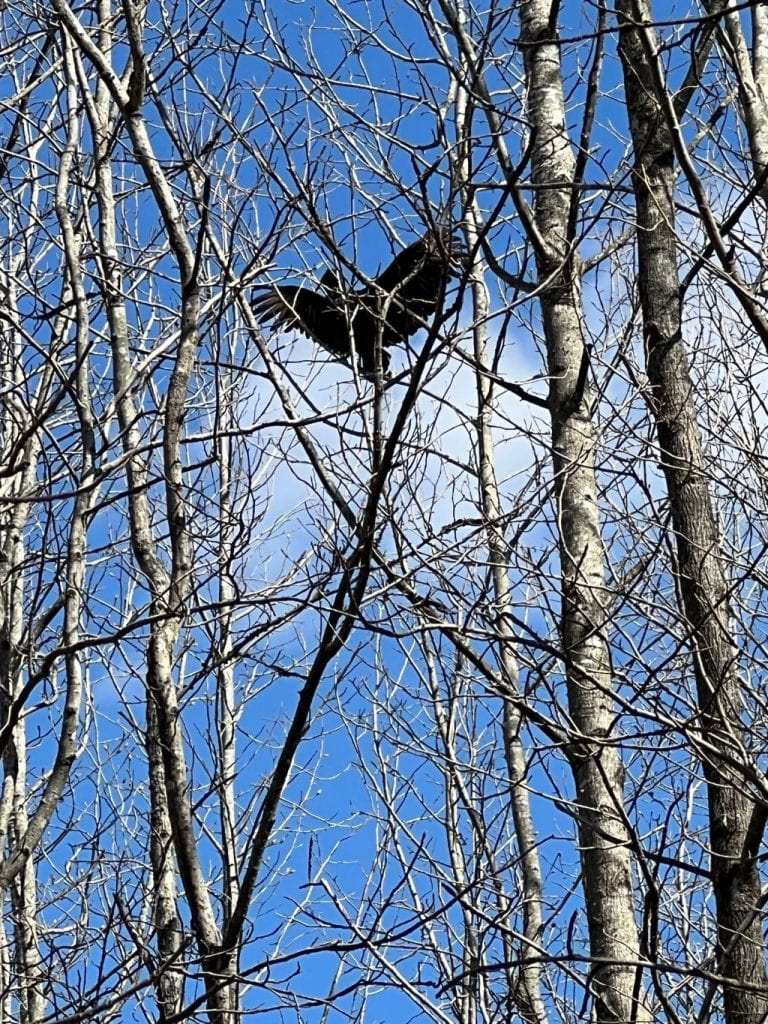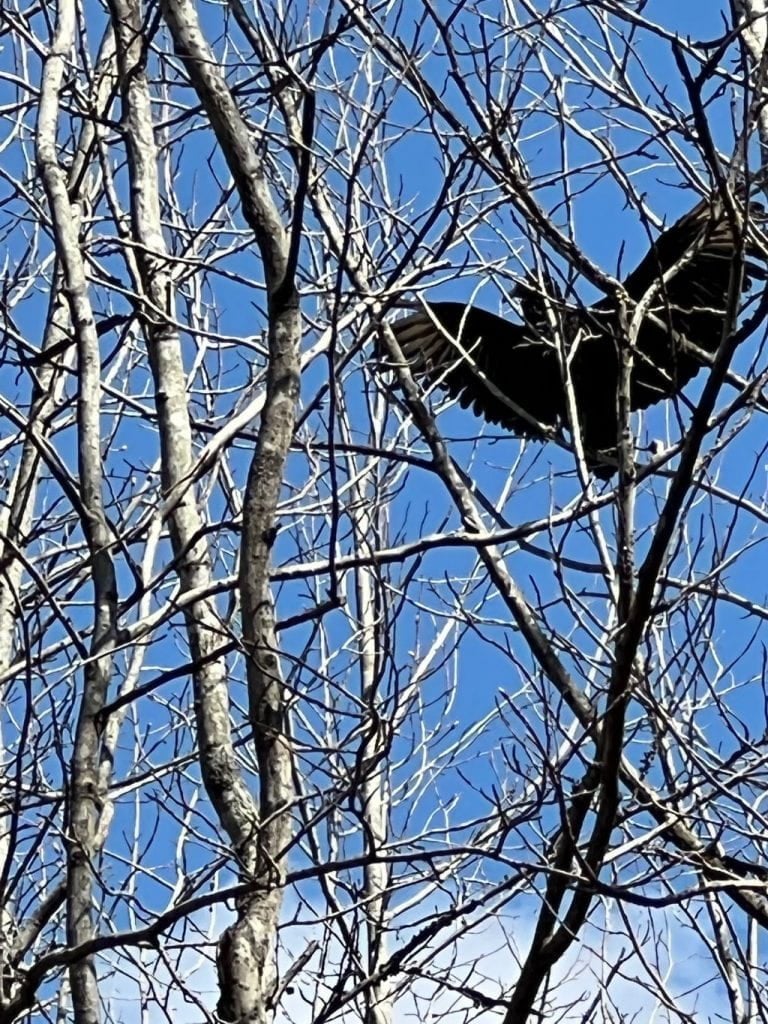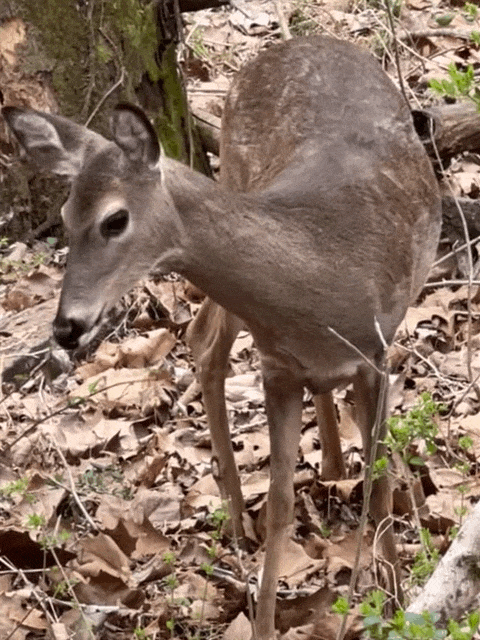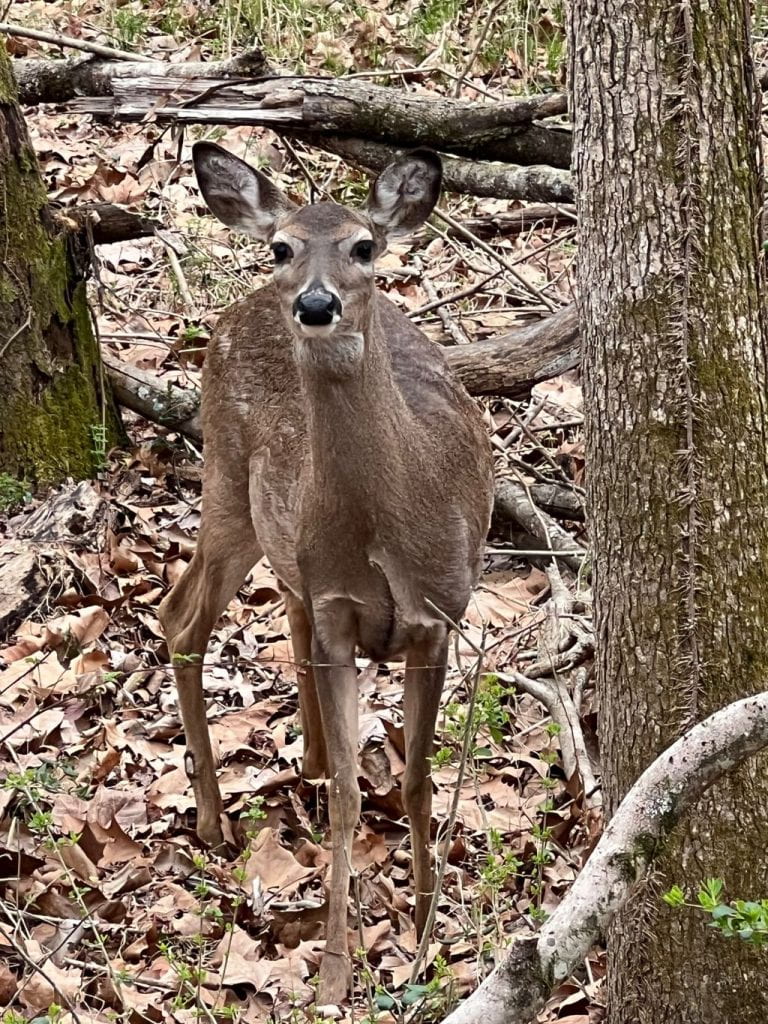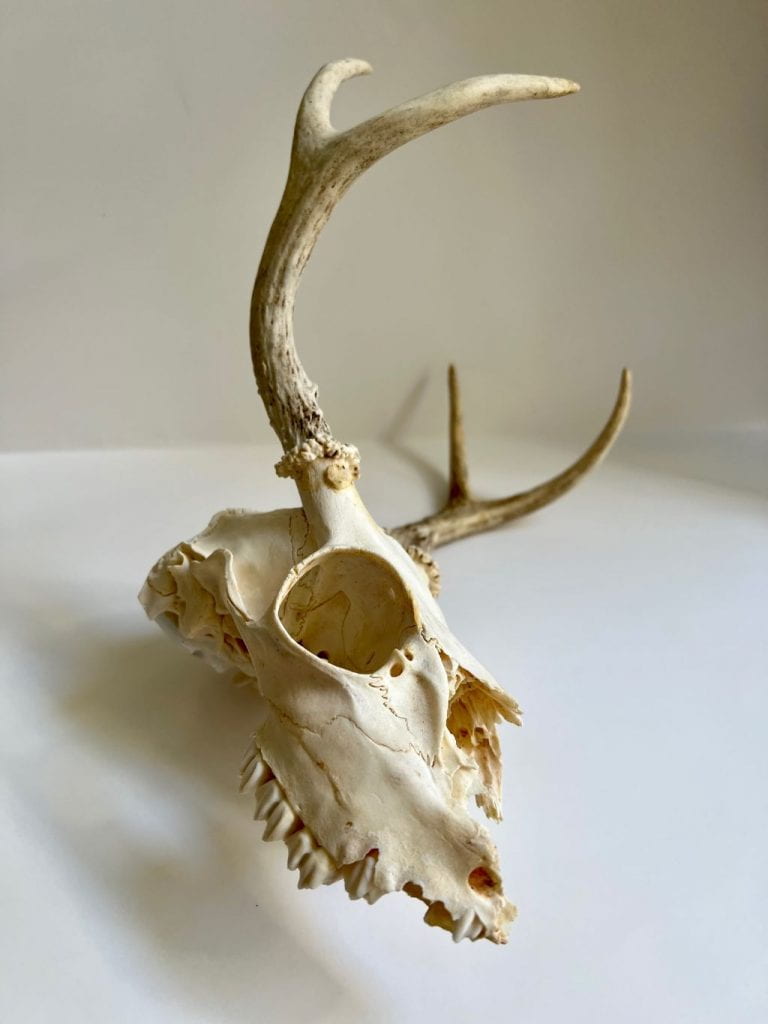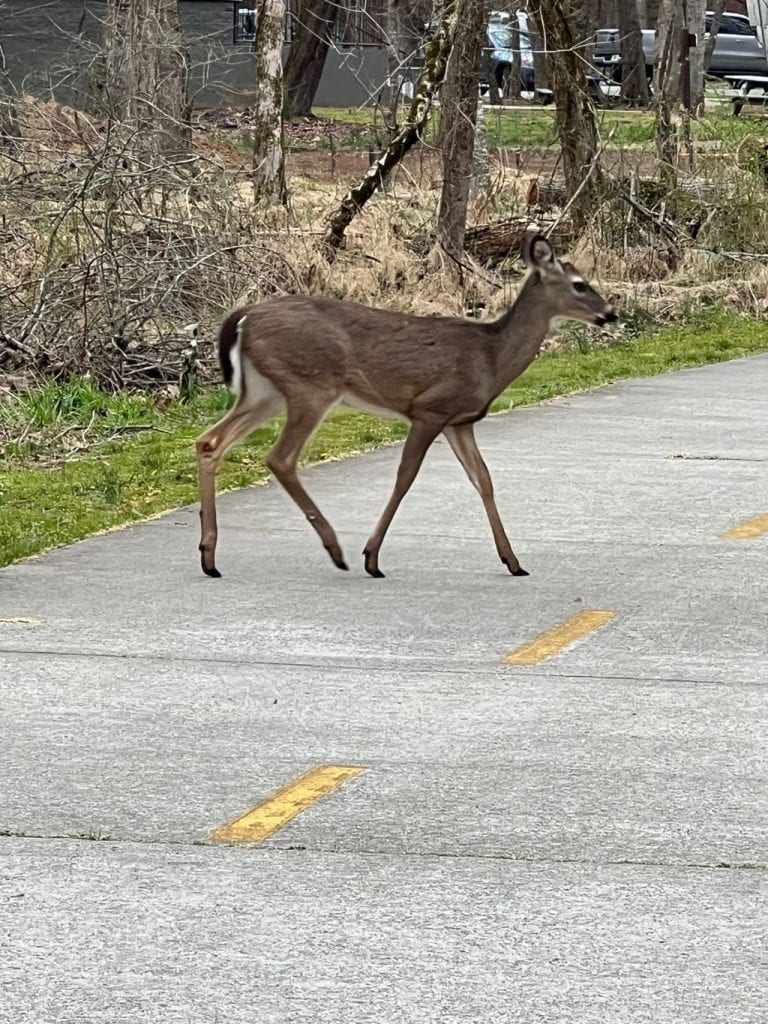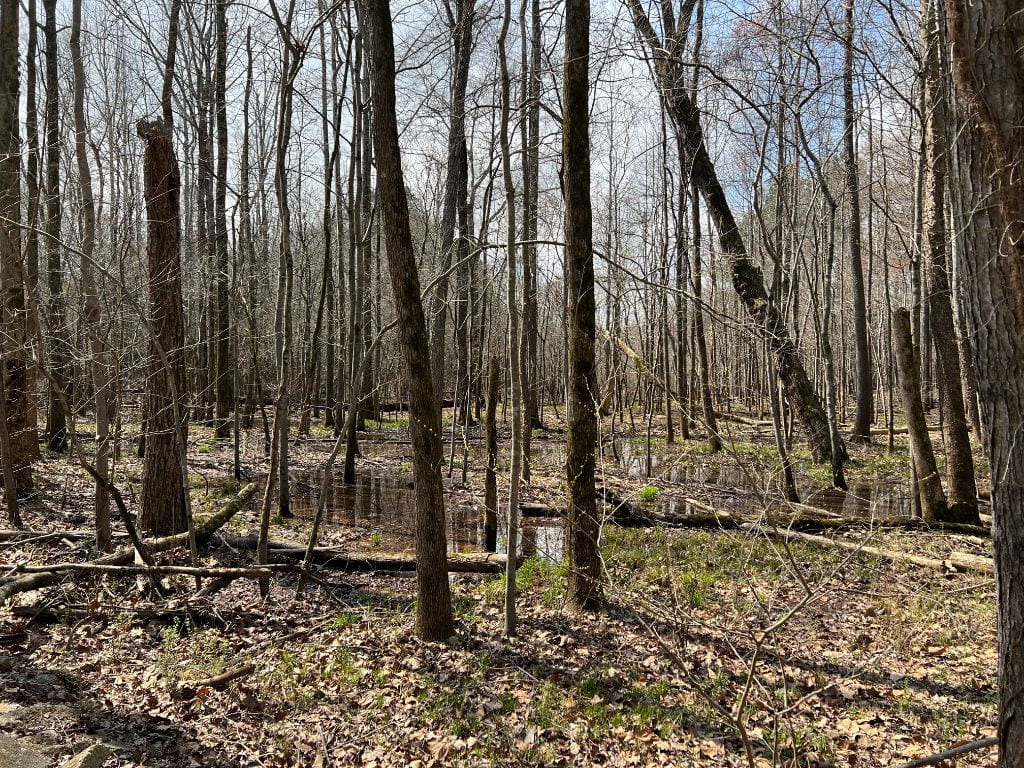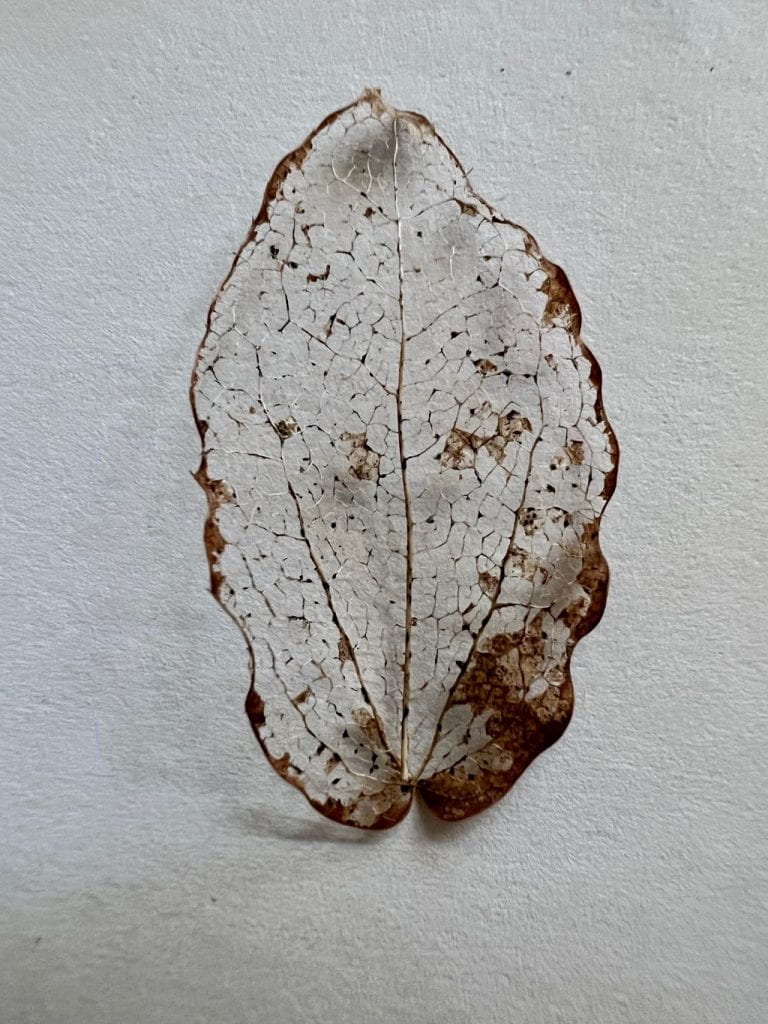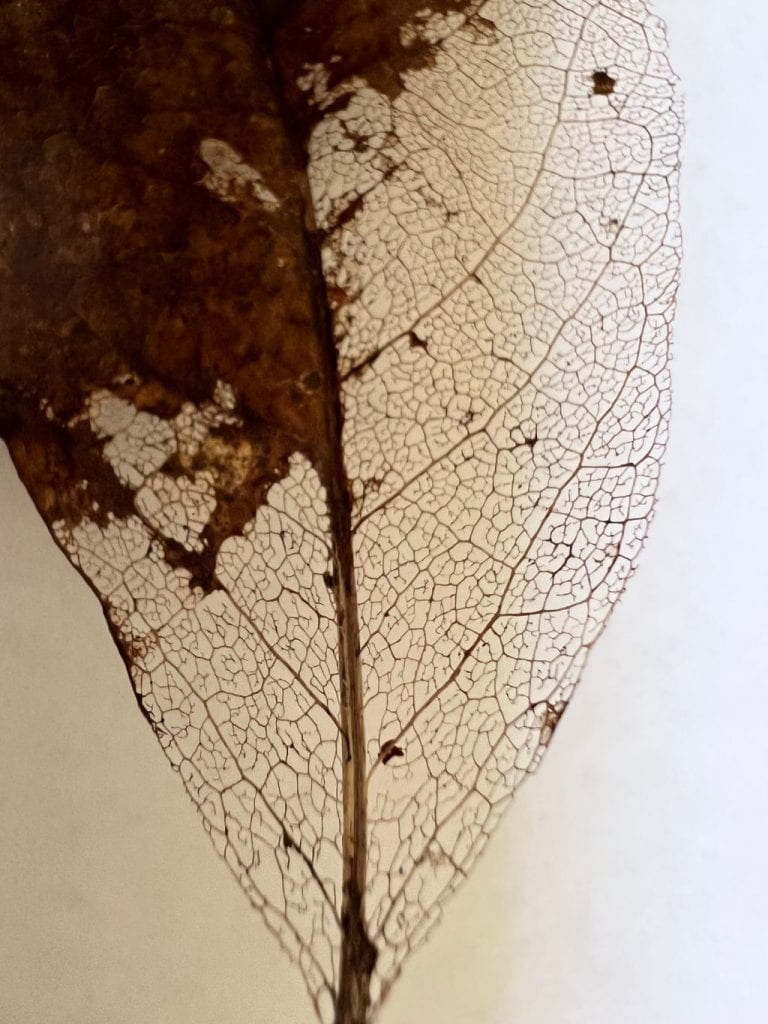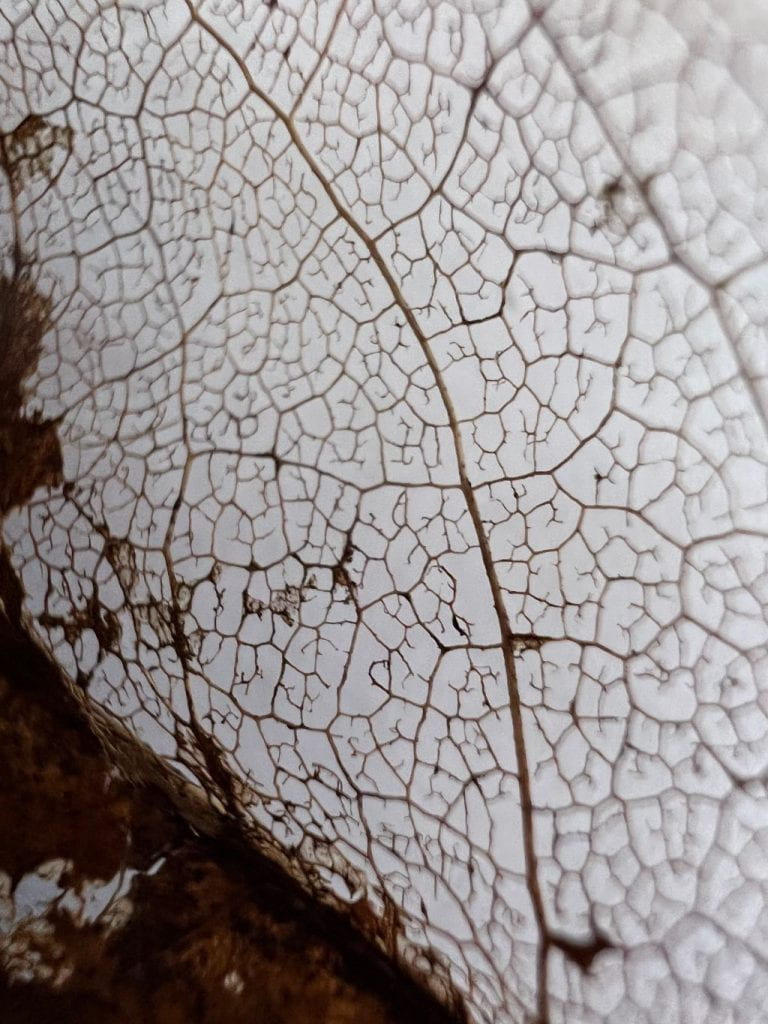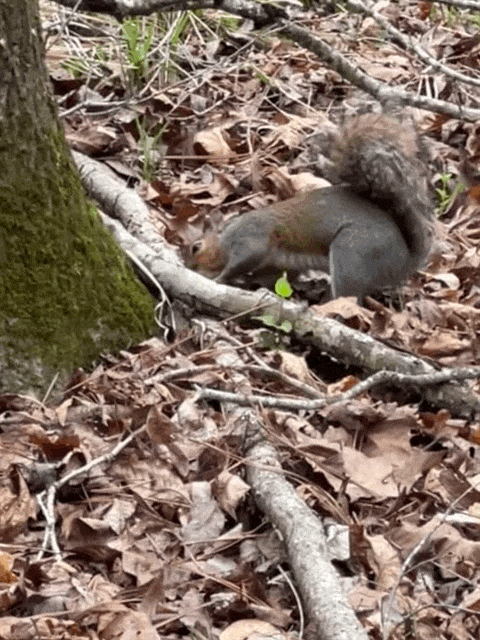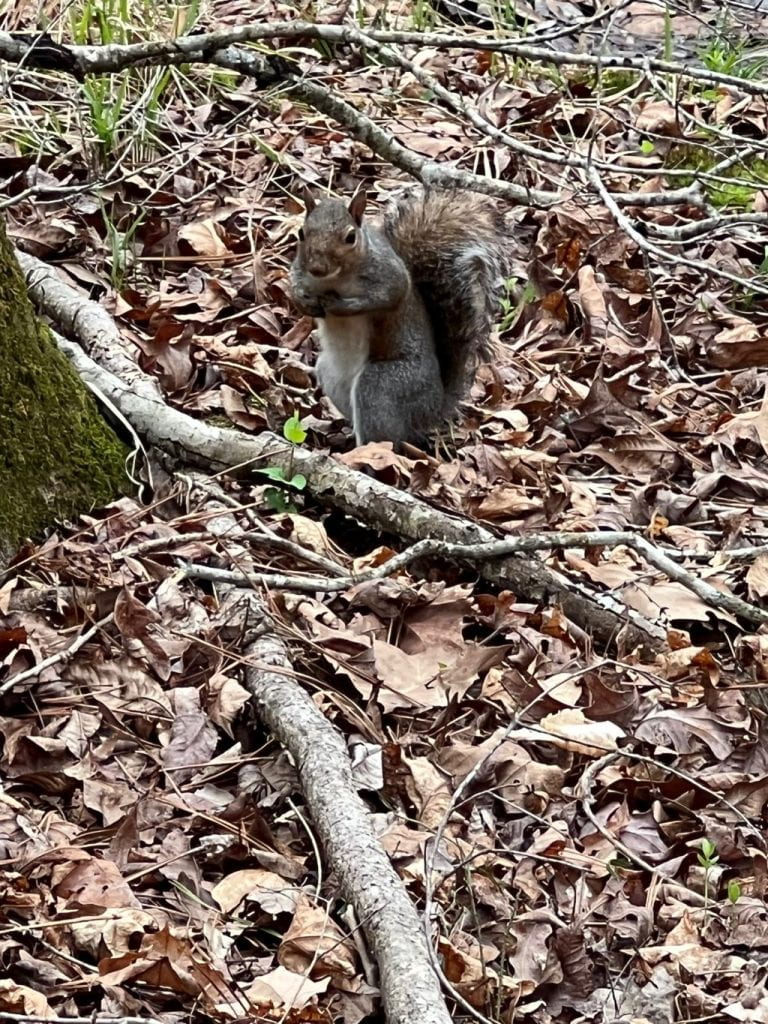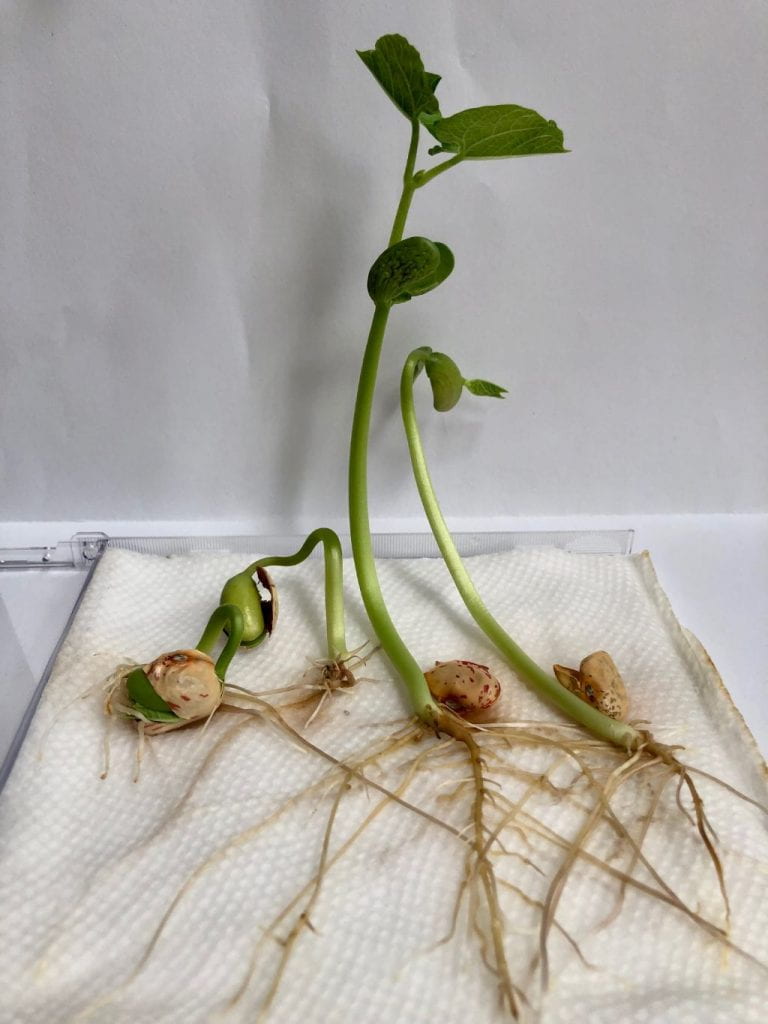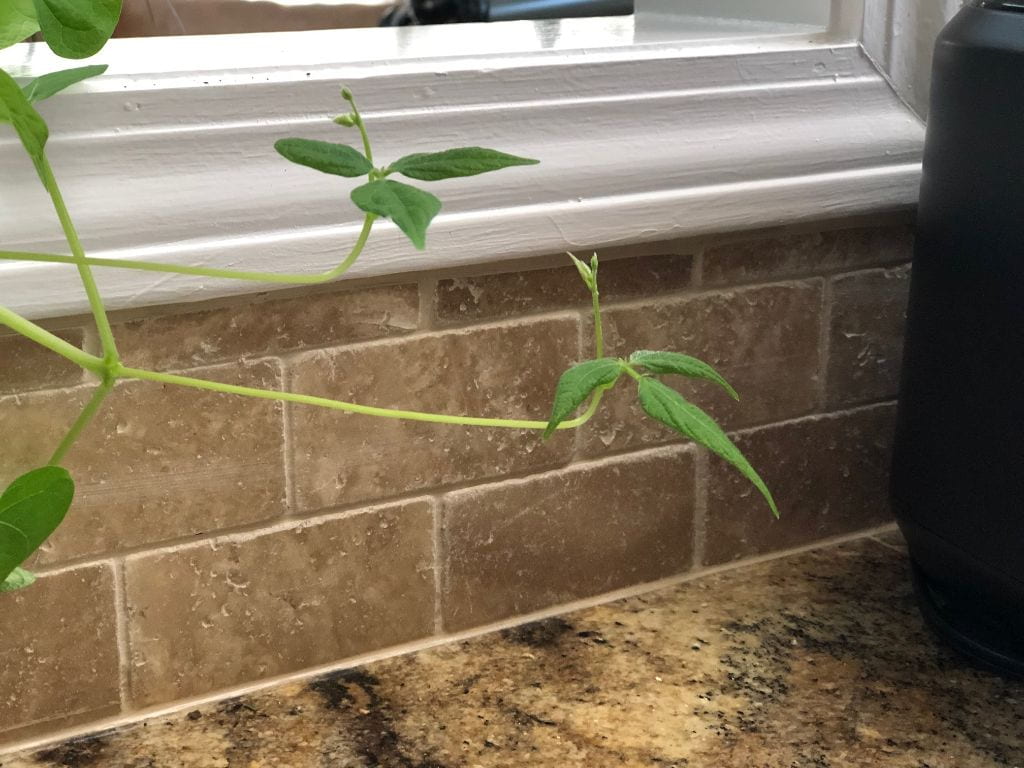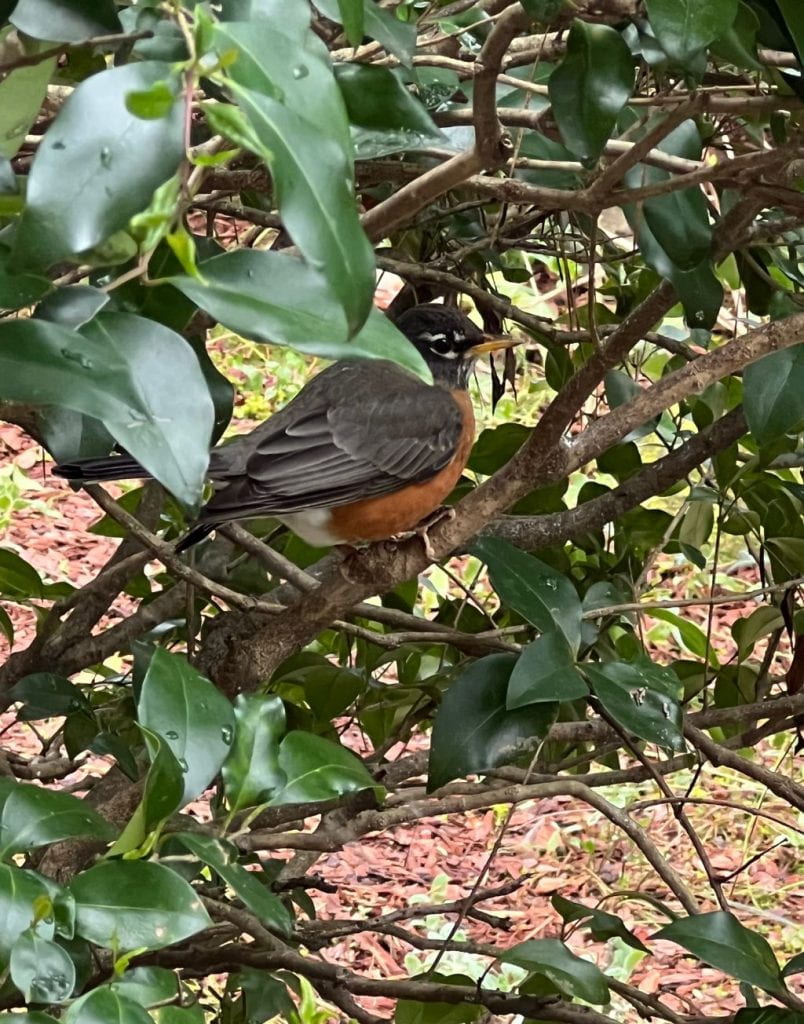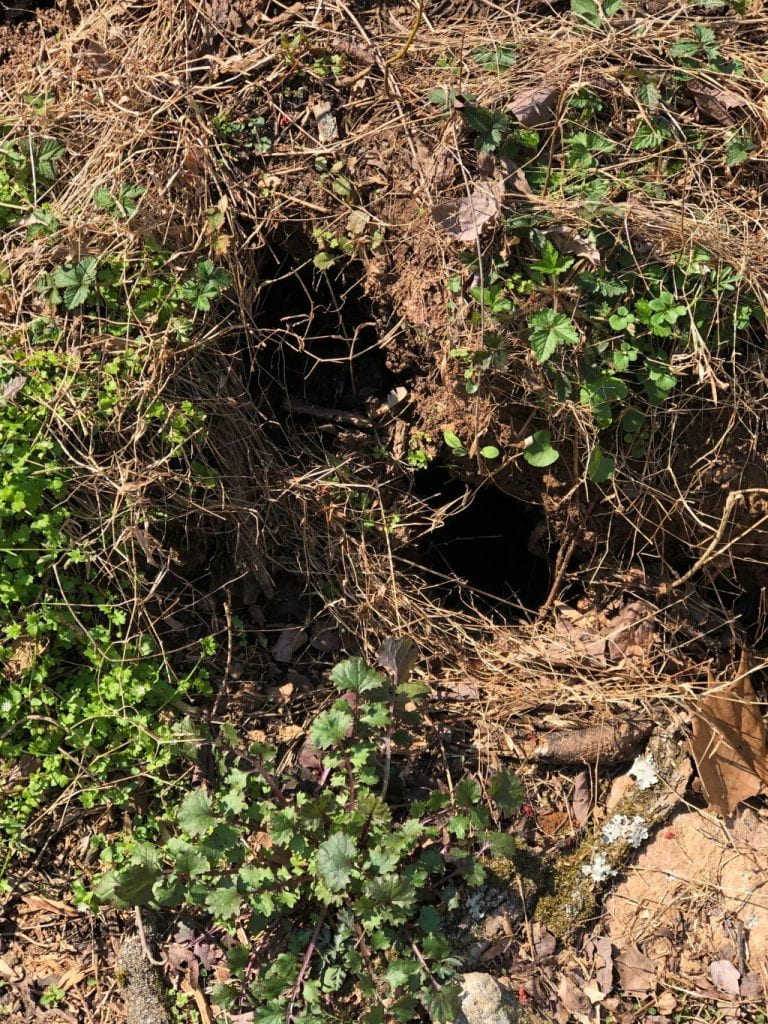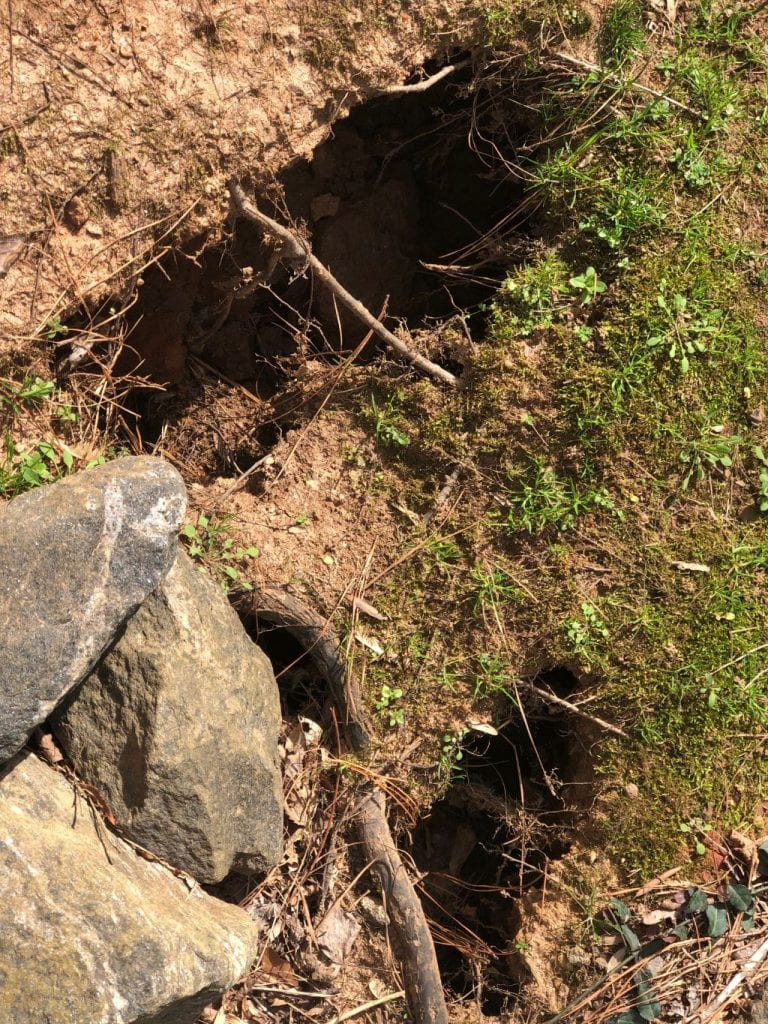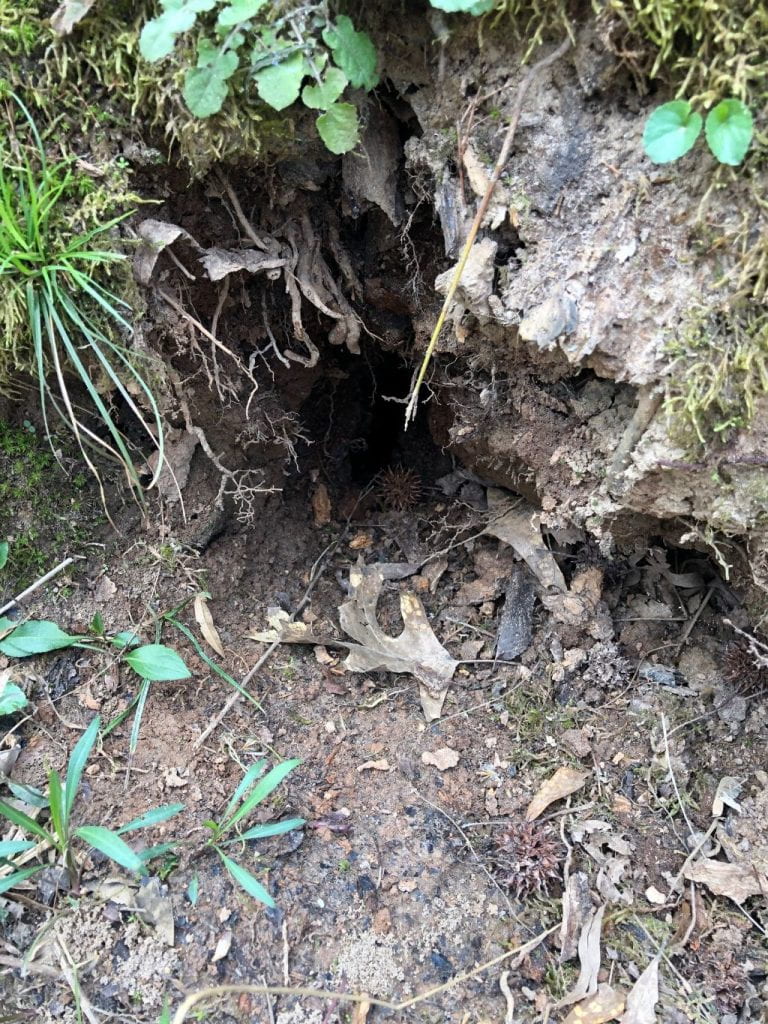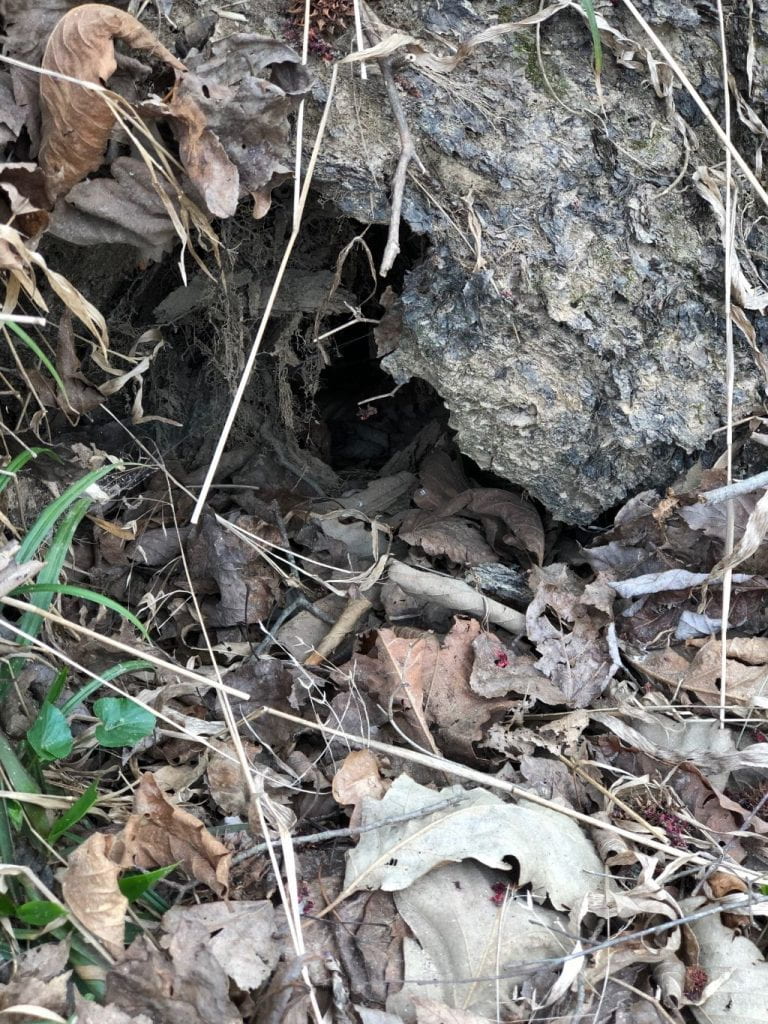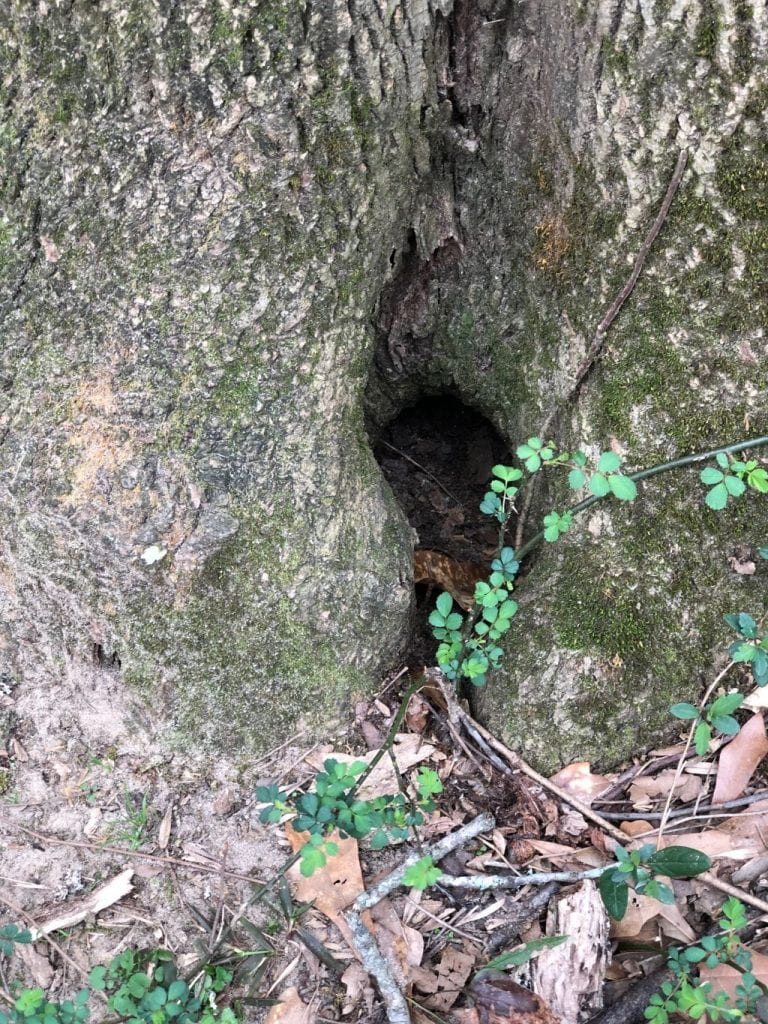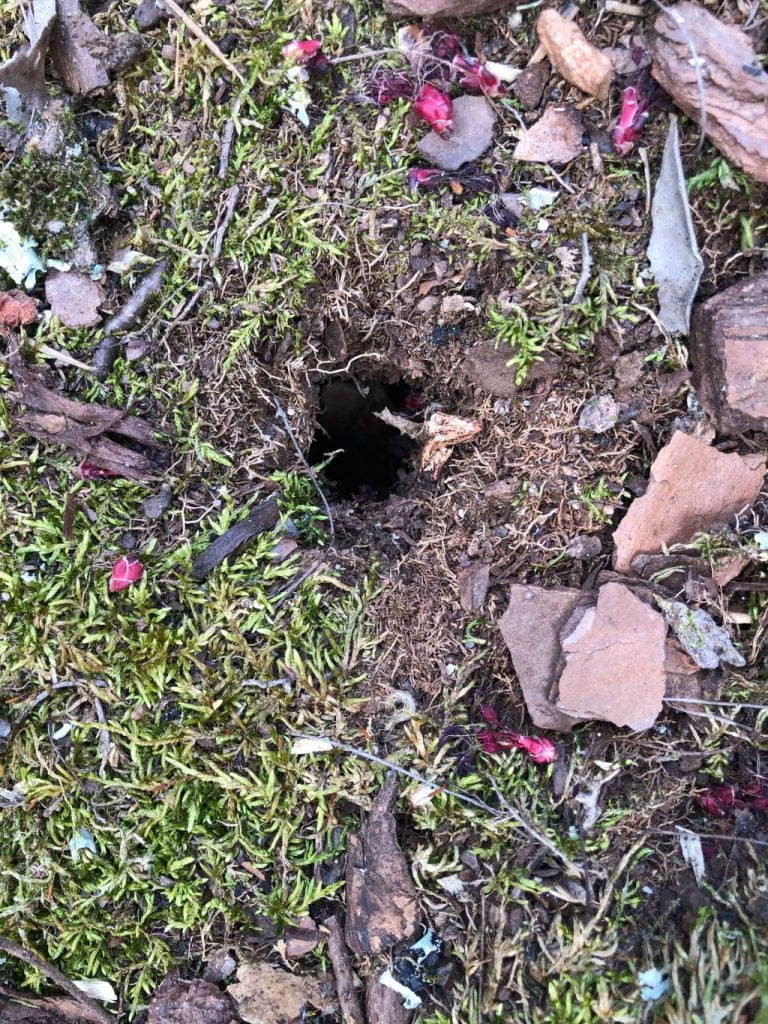Surprises Await!
I look forward to my walks through the forest because if you are observant and look in all directions, surprises await you! I had just begun my hike on the Greenway, when I spotted this little guy! It was if he was singing a greeting just for me!
Then around the corner, I noticed this large bird at the top of a tree with its wings spread. Is it a vulture?
All of us were enjoying a lovely spring morning!
White-Tailed Deer
White-tailed are social animals who walk in herds. Their tan coloring helps them camouflage in their woodland habitat. They are herbivores. Deer have a great sense of hearing and can move their ears to face different directions without moving their heads. Their strong sense of smell helps them to detect predators from a far distance. A deer’s eyes are on the sides of their heads giving them a large field of view and the ability to spot predators coming from any direction. They also have impressive night vision. When deer sense danger, they make a sniffing sound. If they feel threatened, they stomp with their hooves and snort. Deer are crepuscular which means they are more active at dusk and dawn. Male deer are called bucks, female does, and their young fawns. Fawns are speckled, like dappled sunlight, to provide camouflage. Only males grow antlers which they shed each winter. Deer can run up to 30 miles an hour and jump heights to eight feet. I watched them jump over my neighbor’s fence like talented hurdlers. They are also skilled swimmers.
Although I enjoy observing deer, I wish they wouldn’t eat my plants!
This is a buck’s skull. The flat teeth indicate that he eats plants. Notice the wide eye sockets.
“The deer are not crossing the road, the road is crossing the forest.”
Imogene’s Antlers is a fun fiction story to read while learning about deer.

Spring is Here!
Welcome spring! This time of year brings me hope because there is new birth everywhere. The warmer temperatures, additional light, songs of the birds and frogs, and the colorful tree blossoms and wildflowers engage all my senses. Watching the forest come back to life truly brings me joy! It’s as if I’ve been watching a black and white television show that is now in color. So grateful for seasons!
Click here for the Safeshare link.
What happens when spring comes? The author contrasts winter and spring. Click here for the Safeshare Link

Have you been on a spring walk yet? The dominant color in the woodlands today was spring green!
Click here for the Safeshare link.
For behold, the winter is past; the rain is over and gone. The flowers appear on the earth, the time of singing has come, and the voice of the turtledove is heard in our land. Song of Solomon 2:11-12
Spring – Brown to Green
In a previous post, I spoke about the browns of winter. They are described so beautifully in this picture book. Go here to view full screen.
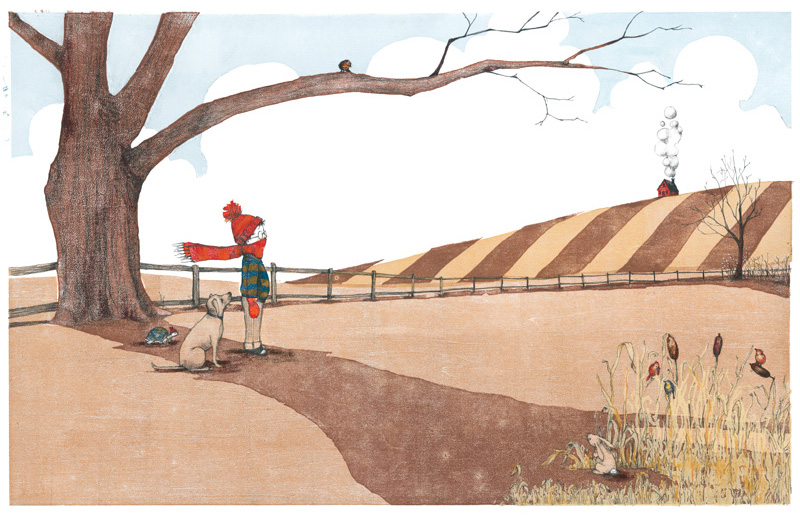

I wrote a recent post about animals who live underground. Did you notice the burrowing animals in the illustrations?
Nature’s Lace
Busy Squirrels
Young scientists often study squirrels in the fall when these rodents are preparing for winter but watching their antics in late winter has been amusing. Common gray squirrels are scatter hoarders and will hide a nut anywhere they can. So, how do they find their hidden stash of nuts? Is it just luck or do they have a plan?
Click here for the Safeshare link.
When I was studying squirrels, I discovered another way that red squirrels prepare for winter. Click here for the Safeshare link.
This reminded me of the story, The Busy Little Squirrel. Children will enjoy the predictable text and it’s a simple story to dramatize. Click here to look inside. It is similar to the story The Very Busy Spider by Eric Carle.
Gravitropism and Phototropism
This is the time of year when we think about spring planting. Use the video below as an introduction to growing seeds.
Click here for the Safeshare link.
A simple story about what happens when you plant bean seeds,

I dissected lima bean seeds with my second-grade students. Click here for that post.
Cool Beans is a fun fiction story to read while you are studying seeds. Click here for the Safeshare link.

Why do roots grow down and shoots up? Geotropism or gravitropism is the influence of gravity on plant growth or movement and phototropism is how a plant responds to light. Click here to go to a recent post where I introduced phototropism.
Click here for the Safeshare link.
Click here for the Safeshare link.
Try these investigations:
I placed bean seeds in four different orientations inside an empty DVD case on a wet paper towel. Will the roots demonstrate geotropism and the sprouts phototropism? Will placing the bean seeds in different directions change how the seeds sprout?
What do you notice? What do you wonder?

I opened the case, laid it flat on the counter, and when I returned later in the day, the plant had turned up. Phototropism!
I placed the bean plant from a previous experiment on its side. Look how the stems demonstrated phototropism and turned upward.
If plants use gravity and light to grow, what happens when astronauts grow plants on the space station? Will roots grow in random directions because there is no gravity? Click here to go to the NASA website to learn about growing plants in space. Vivify Stem has several experiments to learn about growing plants in space. Click here
The goal of learning should not be the memorization of facts, but the understanding and application of knowledge.
Wake-up!
I’m seeing robins around Atlanta – surely a sign of spring!
They remind me of an old Doris Day song that I learned from my mom. I sang it to my sleepy daughter when I needed her to rise and shine! Maybe the robins are singing to the sleepy animals.
When the red, red robin comes bob bob bobbin’ along, along,
There’ll be no more sobbin’ when he starts throbbin’ his old sweet song,
“Wake up, wake up, you sleepy head,
Get up, get up, get out of bed.
Cheer up, cheer up, the sun is red,
Live, love, laugh and be happy!”
Click here to learn more about the American robin.
Click here to listen to My Spring Robin. The story is read aloud first and then scientists can read it themselves.
Who Lives Underground?
When I pass by a hole in the ground, I can’t help but wonder who might be living right under my feet! Animals live in the trees, on the ground, and under it as well. Everyone has its own space-a perfect plan! Which animals have subterranean habitats? Chipmunks, moles, voles, rabbits, foxes, groundhogs, badgers, armadillos, and skunks live in burrows. Some crustaceans, insects (ants and yellow jackets), spiders, frogs, worms, turtles, and snakes also burrow underground. While many animals dig their own burrows, others will move into another animal’s burrow when it is abandoned. Underground tunnels provide a safe place to store food and raise young, a means to escape from predators, and protection from hot or cold temperatures.
Click here for the Safeshare link.
Click here for the Safeshare link.
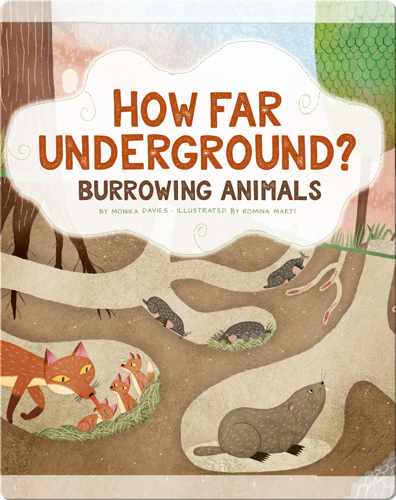
I just ordered this book about burrowing animals.

Tape boxes together to make underground tunnels for a fun extension to your study of burrowing animals. I saw this at allfortheboys.com

To tie in STEM, build mazes with blocks, Legos, or paper towel tubes. Design an underground home for yourself. A German architectural firm, ZA Architects, is designing plans for subterranean living on Mars. This is also the perfect time to provide digging activities for your young scientists. Click here to inspire them.
